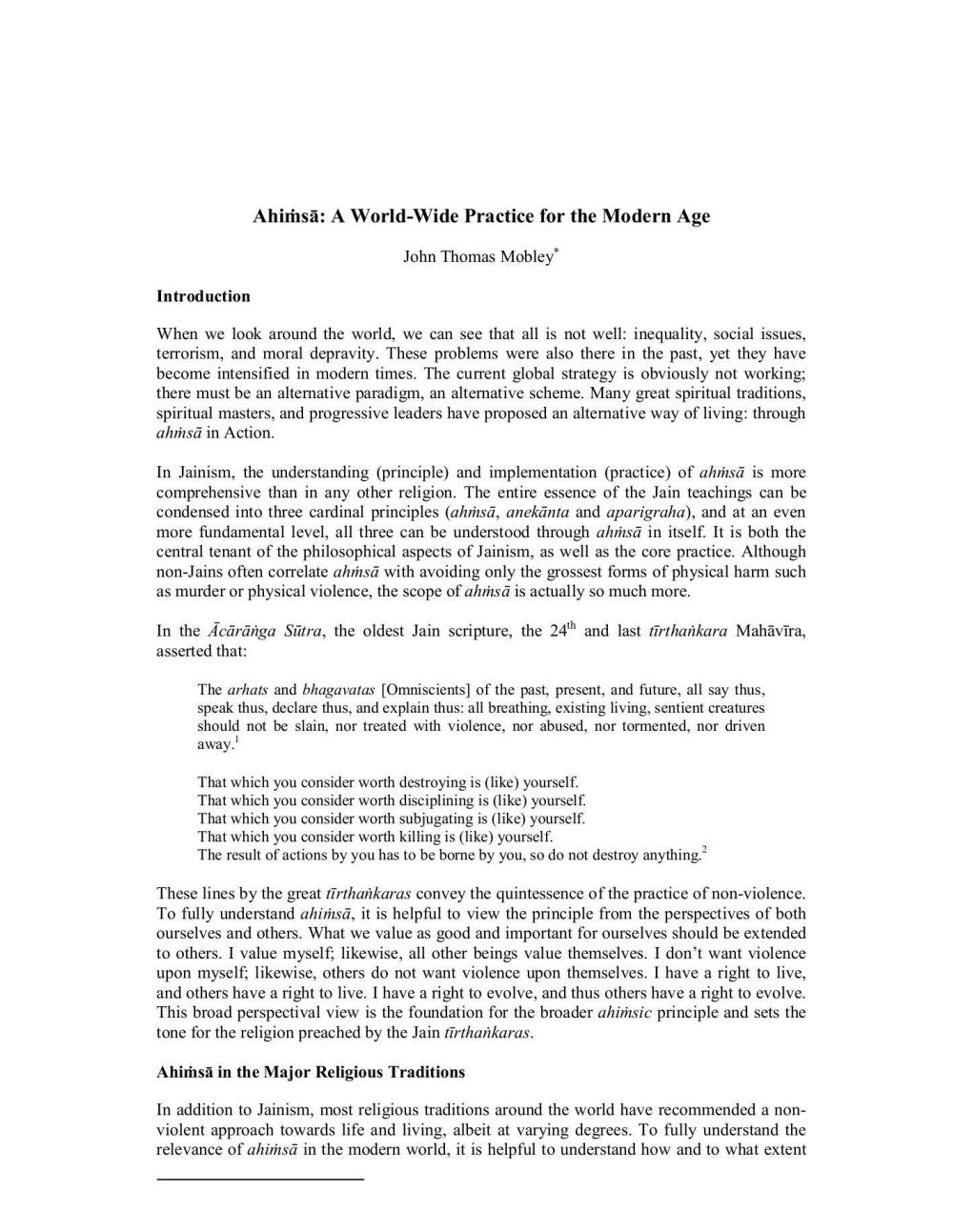________________
Ahiṁsā: A World-Wide Practice for the Modern Age
John Thomas Mobley
Introduction
When we look around the world, we can see that all is not well: inequality, social issues, terrorism, and moral depravity. These problems were also there in the past, yet they have become intensified in modern times. The current global strategy is obviously not working; there must be an alternative paradigm, an alternative scheme. Many great spiritual traditions, spiritual masters, and progressive leaders have proposed an alternative way of living through ahrsā in Action.
In Jainism, the understanding (principle) and implementation (practice) of ahrsā is more comprehensive than in any other religion. The entire essence of the Jain teachings can be condensed into three cardinal principles (ahmsā, anekānta and aparigraha), and at an even more fundamental level, all three can be understood through ahrsā in itself. It is both the central tenant of the philosophical aspects of Jainism, as well as the core practice. Although non-Jains often correlate ahrnsä with avoiding only the grossest forms of physical harm such as murder or physical violence, the scope of ahmsā is actually so much more.
In the Ācārānga Sūtra, the oldest Jain scripture, the 24th and last tirthankara Mahāvīra, asserted that:
The arhats and bhagavatas [Omniscients) of the past, present, and future, all say thus, speak thus, declare thus, and explain thus: all breathing, existing living, sentient creatures should not be slain, nor treated with violence, nor abused, nor tormented, nor driven
away.
That which you consider worth destroying is (like) yourself. That which you consider worth disciplining is (like) yourself. That which you consider worth subjugating is (like) yourself. That which you consider worth killing is (like) yourself. The result of actions by you has to be borne by you, so do not destroy anything.
These lines by the great tīrthankaras convey the quintessence of the practice of non-violence. To fully understand ahirsā, it is helpful to view the principle from the perspectives of both ourselves and others. What we value as good and important for ourselves should be extended to others. I value myself; likewise, all other beings value themselves. I don't want violence upon myself; likewise, others do not want violence upon themselves. I have a right to live, and others have a right to live. I have a right to evolve, and thus others have a right to evolve. This broad perspectival view is the foundation for the broader ahinsic principle and sets the tone for the religion preached by the Jain tirthankaras.
Ahimsa in the Major Religious Traditions
In addition to Jainism, most religious traditions around the world have recommended a nonviolent approach towards life and living, albeit at varying degrees. To fully understand the relevance of ahimsā in the modern world, it is helpful to understand how and to what extent




